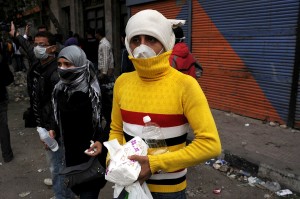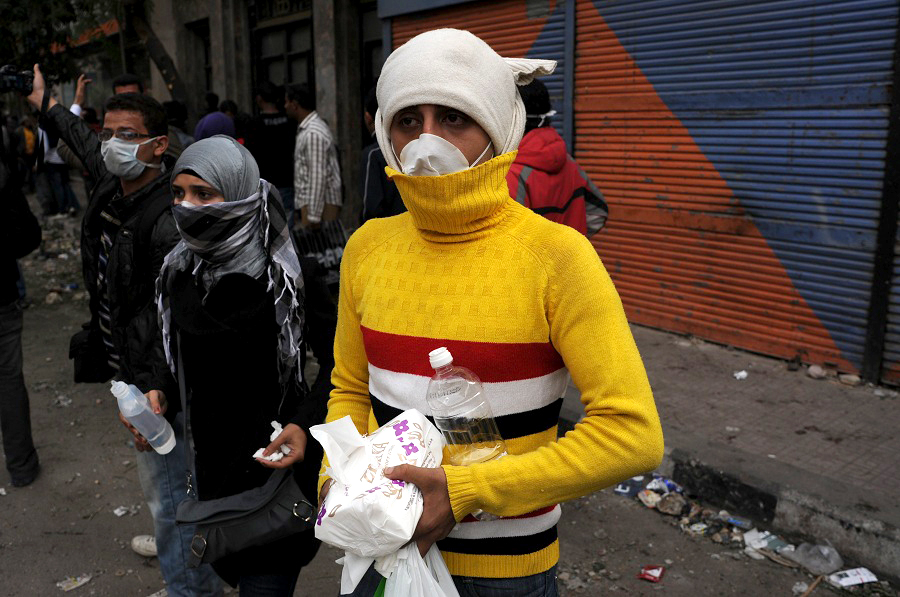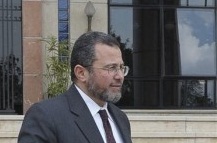
Laurence Underhill / DNE
On the eve of the first anniversary of the Egyptian revolution Amira Y. a 22-year-old student was watching TV at home with her family. She watched a doctor discussing an initiative called “Inta Mish liwahdak” (You are not Alone) and she heard words familiar to her suffering.
“Back in January, I decided to call the numbers the program showed on TV and this is how my therapy started,” said Amira.
Like many, Amira found out that she was suffering from Post-traumatic stress disorder (PTSD). PTSD is usually associated with incidents such as tsunamis and earthquakes, but in Egypt it spread as a consequence of the horrifying incidents in the revolution when Egyptians were brutally tear-gassed, attacked and killed by security police.
A group of psychiatrists launched the “Inta mish liwahdak” initiative to treat people who suffered from PTSD in the aftermath of the revolution through group therapy and medication. Among those psychiatrists is Dr Omnia Mohamed, assistant professor in the Department of Psychiatry and Neurology at Suez University, who explained how PTSD occurs.
“The disorder stems from experiencing an exceptional trauma followed by a significant change in reactions, behaviour and feelings. This trauma has to be caused by tragic events and those occurred in the revolution,” said Dr Mohamed.
She added, “people who were exposed to extremely hazardous events, where their lives or the lives of others were in imminent danger, feel that their physical and psychological integrity was endangered.”
An example of hazardous events is the Battle of the Camel, during which protesters were attacked, run over by horses and killed. Dr Mohamed explains that when an individual escaped danger she or he could not protect those people still in peril. In this situation the individual panics and feels horrified and helpless.
She continued, “the person starts to be haunted by an immense feeling of guilt for not being able to change the course of actions inflicted upon other humans.”
One of the most conspicuous symptoms of PTSD, providing a consistent link between cases for psychiatrists, is re-experiencing. In re-experiencing the person relives her or his trauma, as well as all feelings and reactions associated to it. Patients could be stimulated by an idea related their traumatic incident or a sound they heard during the incident.
Other symptoms include hyper alertness, anxiety and hyper vigilance occurring frequently within a period of one month.
Dr Mohamed said that “when hearing a familiar scary sound, a person could hide behind something at home, as if they were hiding from an armoured vehicle.”
Amira talked about suffering from PTSD saying, “I used to be very scared and I couldn’t get out of my house as I was watching events from the balcony and hearing the sounds of teargas grenades.”
She witnessed a nearby police station burning and saw people running everywhere. “Even the sound of fireworks make my body tremble and my face turn yellow,” she said.
Amira joined a therapy group for people who had experienced similar symptoms. “For everyone in our group, their life changed after the revolution in one way or another. We understood each other and felt each other’s pain,” she said.
Dina Hamza, a 33-year-old filmmaker was in the same group with Amira.
“I actually approached the initiative from a filmmaker perspective, but after I attended the first session I started going there regularly,” said Hamza.
Hamza was hopeful during the 18 days of the 25 January revolution, but thereafter she started feeling frustrated and towards the end of the year, when she saw that justice was not served, she became desperate.
“Everyone who knew me thought I was not normal,” she said.
She recounted her trauma saying, “On 28 January we were attacked while praying the Asr [afternoon prayer] on the bridge… I saw people wounded and dead around me, it felt as if I was in Gaza.”
Every time she left Tahrir square and later on Mohamed Mahmoud street, Hamza felt guilty and anxious about the people there.
She described one of the most memorable therapy sessions, when each group member was asked to detail his or her characters before and after the revolution. “This exercise helped me personally to see how I changed after the revolution,” she said.
Hamza would refrain from interacting with other group members outside the sessions because she wanted to keep personal boundaries, but recently she got involved in a discussion on Facebook and from that moment on she has exchanged phone calls with the group members.
She said, “the best thing about group therapy is that people take care of each other, notice when you are sad, down or distracted and most importantly they listen…we grew to be a real family and you really feel you’re not alone.”
Dr Mohamed said, “what could enormously help patients is ending the sources of their traumas; serving justice. If the conditions causing the traumas persist, the patients could experience a relapse.”
The treatment program for PTSD can last up to two years. Amira and Dina still attend their group therapy and say it improves their conditions and brings hope to their life.






